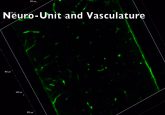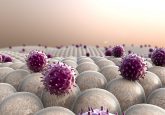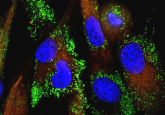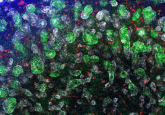A peek behind the preprint: Carlos Diaz-Castillo on junk DNA in regeneration
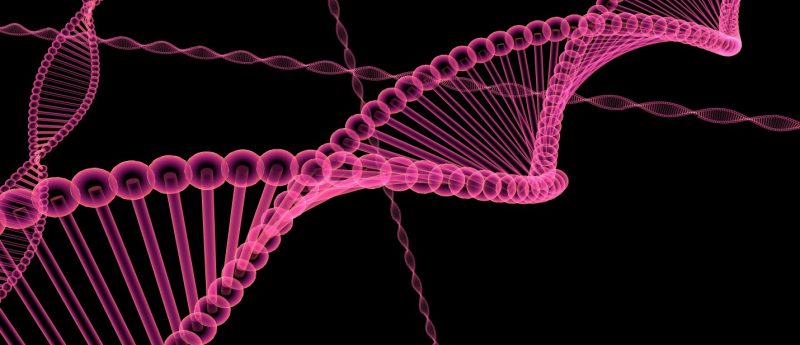
In this interview, Carlos DÃaz-Castillo (University of California, Irvine) discusses his recent preprint article on how junk DNA could affect regeneration.
Editor’s note: The article discussed here is a preprint and has not been peer-reviewed. The preprint can be accessed on PeerJ Preprints>>
Please introduce yourself and your institution
My name is Carlos DÃaz-Castillo and currently I am a Research Assistant in the Department of Developmental & Cell Biology at the University of California, Irvine (CA, USA). My main research interest revolves around the mechanisms of biological variability or the propensity of biological systems to vary. More specifically, my research program spans big data analysis, and theoretical and empirical projects to interrogate multiple levels of biological organization, for example molecules, genomes, nuclei, cells, tissues, individuals, populations, species or communities, with three main goals:
i. To identify the ultimate units of biological variation, and the mechanisms and the properties of biological systems that directly participate in or bias the causation of such variation.
ii. To determine how biological variation is propagated through levels of organization resulting in phenotypic heterogeneity.
iii. To apply such knowledge:
- To study the spatiotemporal dynamics of populations and communities.
- To study the etiology and expression of human diseases.
- To existing and new productive processes that use biological systems, from classical agriculture, to more modern biotechnology, bioengineering or synthetic biology.
What inspired you to write this opinion?
Thanks to the intermediation of my friend Kate McCusker, now an Assistant Professor at the University of Massachusetts Boston (MA, USA), I spent a couple of years working as a Research Assistant in the laboratory of David Gardiner and Susan Bryant at the Department of Developmental & Cell Biology at the University of California, Irvine, which specializes on the study of regenerative responses using the salamander, Ambystoma mexicanum, or axolotl, as main model system.
During this time, I came to realize that species with remarkable abilities to regenerate missing parts such as salamanders tend to have genomes bloated with junk DNA. Conversely, groups of species with very limited regenerative abilities such as birds and nematodes tend to have very compact genomes with a more reduced fraction of junk DNA.
Such trends were very intriguing to me because lately I have been studying how junk DNA can act as a modulator of gene expression and facilitator of genome evolution. Unfortunately, because of the repetitive nature of most junk DNA elements, genomic regions enriched in junk DNA such as chromosome centromeres or even whole genomes highly enriched in junk DNA such as those for salamanders have been and still are particularly refractory to genomic analyses. Such technical limitations make it very hard at the present moment to empirically substantiate the mechanistic underpinnings for the apparent natural covariation of the genomic content in junk DNA and regenerative abilities.
Thus, I decided to dedicate one piece to speculate on the mechanisms through which species with junk DNA-rich or -poor genomes could end up with enhanced or limited regenerative abilities. The main goal of this piece is to lay down testable hypotheses that could help better designing future attempts to shed some light on the natural variation for regenerative abilities, which can be of immense value for regenerative medicine.
What is ‘junk DNA’?
Although a number of researchers might have started using independently the term junk during the 1960s to refer to certain genetic elements, Susumu Ohno is commonly credited for the formal introduction of the junk DNA concept. In 1972, Ohno noticed that a discrepancy existed between the variation in the size and the gene content for the genomes of the bacteria Escherichia coli and mammalian species.
“species with remarkable abilities to regenerate missing parts such as salamanders tend to have genomes bloated with junk DNA”
Upon such discrepancy, Ohno reasoned that a significant fraction in each genome could be described as ‘the remains of nature’s experiments which failed’, much of which ‘appear to be useful in a negative way (the importance of doing nothing)’. Since then, whether a fraction in each genome can be considered ‘useless’, and whether junk might be an appropriate term to refer to such fraction have been subjects of intense debates.
There are two main points of contention regarding the junk DNA concept. On one hand, it is virtually impossible to test without a shadow of a doubt whether any subject of study is truly ‘useless’. An aphorism very frequently used in science says that ‘the absence of evidence is not evidence of absence’. In other words, even if we were not able to demonstrate that a piece of DNA is of value for the well-being of an organism in a number of circumstances, we could never discard the possibility that such piece was actually very valuable in a circumstance remaining to be tested.
On the other hand, junk DNA encompasses a very heterogenous array of genetic elements. Junk DNA elements include intergenic regions, pseudogenes or highly repetitive DNA that are not transcribed into RNA, introns and non-coding RNA genes that are transcribed into RNA but not translated into protein, or transposable elements and viruses that contain DNA segments that are transcribed into RNA and translated into proteins essential for their selfish propagation. Such heterogeneity makes it very complicated to find any feature in common between all of these elements other than their presumed but hard to conveniently prove ‘uselessness’.
There is one more piece of knowledge regarding junk DNA that is very helpful to answer your question: what is ‘junk DNA’?
Starting with Barbara McClintock’s seminal work, a body of literature has grown evidencing that junk DNA can directly participate in the causation of genetic changes, be repurposed as genes or regulatory elements, and modulate gene expression. Because junk DNA involvement in the causation and modulation of the expression of genetic variants and because such variants are the fuel for the evolution of natural species, it has been argued that junk DNA elements could be better described as evolutionary facilitators.
Were this the case, it is debatable whether the use of the term junk as synonym for worthless, useless or trash is appropriate to refer to a genomic fraction that ultimately plays a biological role. Here is where it is important to remember that the word junk can also refer to old or discarded articles that are considered useless or of little value but that may be used again in some form.
Based on this meaning of the term junk, it seems adequate to use it to refer to this fraction of the genome that although might be disposable for the well-being of individuals, it can participate in the causation and/or modulation of biological variation that drives the evolutionary dynamics of natural populations.
What are the benefits of having a genome filled with junk?
If you are confused, be sure you are not the only one. Junk DNA is a puzzling concept that defies our tendency to use precise definitions for biological entities attending exclusively to immutable functional criteria. There are still many unknowns regarding junk DNA, partly because of the technical difficulties I mentioned before for the genomic characterization of such mostly repetitive DNA, but also because the still prevalent view that junk DNA represents a useless or even detrimental fraction of the genome.
“large differences in the genomic content of junk DNA between species could have an impact on their regenerative abilities”
I am sure that in your house there is a drawer, a box, a cabinet, or even a whole room filled with stuff from the most diverse origins, from pieces of furniture or electric appliances that at some point broke down, to memorabilia from your past, holiday’s decorations, or all these gifts you received and you don’t really like and don’t know what to do with them. You may not use or even take a look to the contents here, so the ultimate value of such stuff, if it ever had one, might be fading away in your memory. However, suddenly one day you need to balance a wobbling table and EUREKA! You open your junk drawer and find something that helps you solve the crisis, at least transitorily until you find a better solution. It could be fathomed that in spite of its apparent ‘uselessness’, storing junk is an affordable way of being somehow prepared to solve unexpected challenges.
The junk DNA within the genome of each species has a similar value to your junk drawer. It provides natural populations with a source of variability that can help them confront challenging situations in an inexpensive way until a better suited solution is found. An example of such a situation could be a sudden increase in temperature that causes the wood parts in your table to swell rendering the table unbalanced, or that strains the survival of a species that was adapted to cooler temperatures.
In the light of the possibility that storing junk DNA might actually be of some value, a better question may be why there are species with genomes with very limited amounts of junk DNA? Why, or better, how, the genomic content in junk DNA actually varies is one of these unknowns concerning junk DNA which a number of researchers, including me, are trying to solve.
How could we harness this DNA in regenerative therapies?
The most immediate value junk DNA can have for regenerative medicine is to offer a barely explored segue into the identification of the genomic determinants for the evolution of regeneration, which is an area I am particularly interested in and I tried to prime with my piece. Since regenerative responses rely on intervening cells already being or becoming less specialized, in the present piece I hypothesize with two non-excluding ways through which large differences in the genomic content of junk DNA between species could have an impact on their regenerative abilities by driving differences in the degree of irreversible specialization of some or all of their cells.
“junk DNA…could help [us] confront challenging situations in an inexpensive way until a better suited solution is found”
Although it is still early to anticipate exactly how, the empirical confirmation for this hypothesis and the knowledge we acquire because of it can be of value to improve existing or devise new regenerative therapies. In fact, since changes in cell specialization are also related with other health issues like cancer and aging, it is possible that the study of the evolutionary dynamics of junk DNA had an even more profound impact for the understanding of the etiology and expression of human health challenges.
The application of junk DNA-friendly comparative genomic approaches to the study of groups of species with accentuated natural variation for regenerative abilities and their genomic content in junk DNA such as amphibians, platyhelminths or annelids will surely help finding a definitive explanation for why some species can regenerate missing parts and other cannot.
Circling back to the meaning of the term junk DNA, although it might still be early to anticipate the ways through which junk DNA can be harnessed in regenerative therapies and other biomedical applications, it might turn out that all this junk in our genomes is all but useless.
